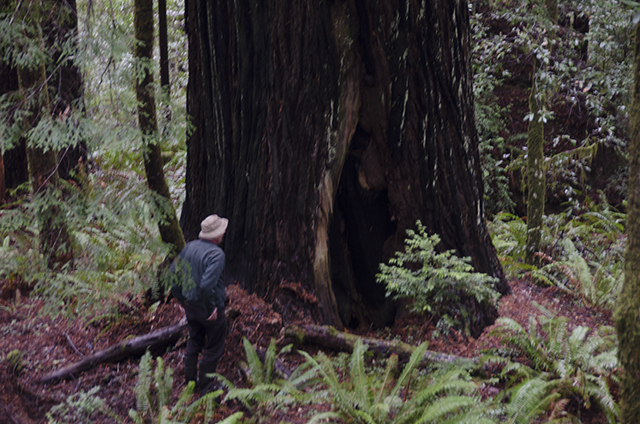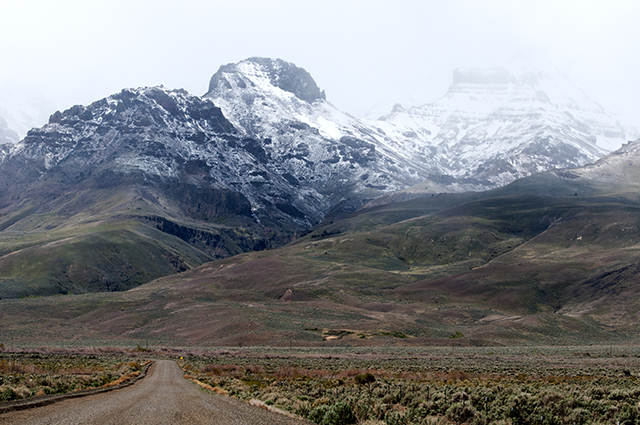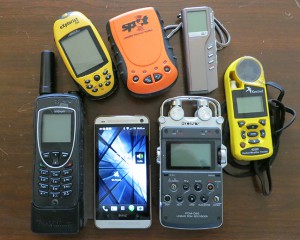Do you wander in the back country, out of cell phone contact with the rest of the world? Do you wonder what you would do in case of incapacitating injury or perhaps a catastrophic breakdown of your vehicle? If your vehicle breaks down you may be able to walk towards help… maybe a long walk… and at my age those 20 mile (plus) hikes may take several days. And if you have a broken leg maybe you won’t walk at all. Maybe you will wait in extreme pain and agony while your hiking partner makes the hike back to civilization. What? You are out there alone? You need a plan B, one that involves communication with the rescue posse.
Is a satellite phone what you need for peace of mind? Does the expense worry you? There is a lower cost option like the Spot Satellite Messenger device. Basically Spot has four buttons: On/Off, OK, Help, and 911. In life threatening situations press 911 and the rescue posse is sent to your GPS coordinates. If your need is less drastic press “Help” and your preselected loved ones can arrange transportation for you. If you want to play “where in the world is Waldo” press the “OK” button and your location is sent to those who might worry about where you are at the moment.
How good is Spot? The United States Department of Agriculture (USDA) via the Forest Service tested Spot for use under various conditions and I think you will find the results encouraging. You can find their results online. Try this link:
The Spot device will cost about $150, the service will cost about $150 a year, and if you want GEOS rescue insurance you will spend another $150 a year (Prices are subject to change). It’s money well spent if you need the rescue posse and a helicopter ride to the nearest hospital.
I have a Spot and I’m amazed how easily I can reach a satellite and how accurate the GPS position can be. But if you really need to communicate with someone and tell them the details of your sad story then some form of satellite phone is necessary. If I’m in serious trouble I want to talk to someone. Try this link to an amazing real life adventure story, an actual rescue effort, and make up your own mind, Spot or not.
There is good news if you decide on the sat-phone. It turns out the price is low enough to be affordable even for those not in the top one percent.
What brand of sat-phone should you buy? The choices may be bewildering. Reviews may be little more than rehashed advertising fluff stuff. Some basic understanding of how the satellite network is deployed is necessary. How you plan to use the sat-phone is critical to the decision of what you need to buy.
The first question to answer: Where in the world will you be using the phone? Availability of service may not be worldwide. Some countries prohibit the use of a sat-phone. Depending on location some phones can see their satellite better than others. If you are outside the USA you may need a more robust service package.
The satellite network may be critical to the reception you need. Being able to see the satellite is crucial to communication with it. A satellite perched in stationary orbit over the equator may be too low on the horizon for good reception if you are in mountainous terrain. If you are mobile you may be able to move to where a signal can be received but if you are down with a broken leg the satellite must come to you. Satellites that are moving may eventually be easier to see but pose the problem of how long a conversation can be held before the satellite goes out of sight. Use of SMS texting reduces the air time needed to send or receive a message.
For me the choice was an Iridium Extreme 9575. I liked the reception footprint and the data capability of the sat-phone. It is GPS capable and has SOS features. The service plan is comparable to a cell phone service plan in terms of cost. I selected the “no minutes” service option and plan to use the SMS texting feature to further reduce the cost of service. My option costs about $50 a month plus charges for the air time used. If you need a phone just for the summer months another option is to rent a phone.
As we speak I am waiting for the FedEx parcel to arrive with my Iridium 9575… more later.




